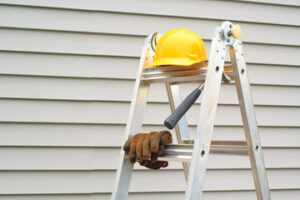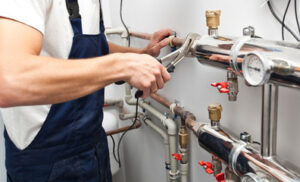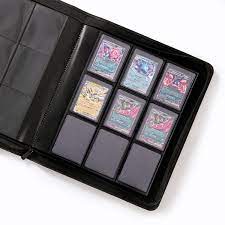Siding protects the exterior of your home from weather damage, moisture and wildlife intrusion. It can be expensive to replace if damaged, so catching signs of damage early is essential.

While minor issues can be addressed with a vinyl patch kit, more extensive damage or structural issues may require professional help. Obtain quotes from multiple contractors to ensure that you get the best price and value for your money. Visit Us Here to learn more.
When the siding on a home begins to crack or tear, it’s important to repair this damage as quickly as possible. If left unattended, this damage can worsen over time and lead to a need for more extensive repairs or even replacement siding.
There are a number of different reasons why vinyl siding can begin to crack or tear. Physical impact, UV exposure, and age can all contribute to this issue. To address this problem, homeowners can apply caulk to minor cracks or holes in vinyl siding panels. This is a relatively easy DIY project that requires only a few basic tools and supplies.
First, homeowners should clean the damaged area thoroughly to ensure it’s free of dirt and debris. After cleaning, they can use a damp cloth to rinse the area and allow it to dry completely before proceeding. Next, they should choose a paintable caulk that matches the color of their existing siding. This will help the repair blend in with the rest of the panel and ensure a watertight seal. Finally, they can carefully apply the caulk to the affected area, using a putty knife to smooth it and create a seamless finish.
Holes in wood siding are also common, and these can be caused by insects, rot, or simply by wear and tear over time. If not repaired, these holes can become entry points for bugs and other critters, leading to further damage and possibly necessitating full siding replacement rather than just repairs.
For smaller holes, wood filler can be used to repair the damage. Follow the instructions on the product to mix it, then apply the filler to the hole and use a putty knife to spread it out. Once it dries, sand the surface with 100 grit sandpaper and clean it thoroughly. For larger holes, wood can be replaced with new panels cut to fit the damaged area.
Brick is another popular choice for siding, but this material can be susceptible to issues like cracks, mortar problems, and white salty deposits known as efflorescence. To fix these problems, a homeowner can apply masonry crack sealant or epoxy filler to the affected areas.
Loose Panels
In addition to being a nuisance, loose siding panels are a potential threat to the structural integrity of your home. If left unchecked, this issue can lead to the leaking of water behind your walls and potentially other problems like mold or mildew. As a result, loose siding should be a top priority for any homeowner seeking to keep their home safe and healthy.
To identify the cause of looseness, begin by visually inspecting your entire exterior. Look for areas where your siding appears misaligned or detached, particularly around doors and windows. Look also for gaps and openings, as these can allow for infiltration of water and pests. Finally, feel the siding for any signs of softness that might indicate water damage or rot.
Once you’ve identified problem areas, it’s time to start the repair process. Begin by removing any nails or screws that are holding the affected pieces in place. Use a pry bar or claw hammer to gently extract nails, taking your time to avoid damaging the surrounding area. A little penetrating oil can help make the process go more smoothly, especially if the nails are rusted or stuck in place.
Next, thoroughly clean the area where you’ll be working, as dirt can interfere with the adhesive properties of the new repair materials. Mix a solution of warm water and mild dish soap to wash the surface of the siding, paying special attention to any areas where the loose sections are located. Be sure to rinse away the soap and dry the area completely before proceeding.
For vinyl siding, a handy tool to have for loose panels is a siding removal tool, which you can position beneath the loose edge of the panel to gently pull it upward and outward. This allows you to see the full extent of the looseness and determine if a nail or other fastener has failed. Once you’ve loosened the loose section, snap it back into place against the locking ridge and apply a little caulking to help the connection adhere. Repeat the process on any other loose panels until the entire damaged area has been repaired.
Structural Issues
Siding protects the home, enhances curb appeal, and helps with energy efficiency. Over time, though, weathering and damage can cause problems that need to be addressed promptly. Ignoring these issues can lead to more costly repairs or structural damage.
Cracks, warping, and buckled siding are serious signs of moisture infiltration and underlying structural problems. A professional inspection can assess the severity of the problem and recommend targeted siding repair solutions that restore the integrity and appearance of the siding.
Ineffective insulation is another common issue that can cause drafts and increased energy bills. Replacing or upgrading the existing insulation can help lower energy costs and increase comfort and efficiency.
Moisture buildup in the siding can cause mold and mildew growth, compromising the safety of the home and requiring immediate attention. Professional cleaning and treatment can prevent the spread of mold and mildew, allowing for a smoother paint job and extending the life of the siding.
Loose or missing siding panels can create noise and movement in windy conditions, as well as expose the interior of the home to moisture and extreme temperatures. Siding damage repair specialists can secure loose sections and replace any damaged panels, ensuring the proper fit and durability of the siding for years to come.
A professional inspection can also identify and fix problems with the foundation or structure of the home, preventing further damage and minimizing cost. In addition, an expert can inspect and trim nearby trees and shrubs to prevent them from scraping or damaging the siding in high winds.
Infestations of wood-destroying insects and pests can be costly and frustrating to deal with. Regular pest inspections and timely removal can help reduce the risk of infestation, preventing costly damage and reducing the need for extensive siding repair or replacement. In severe cases, a siding repair specialist can apply pest-repellent treatments to ensure the integrity of the siding and protect the home from future infestations.
Mold and Mildew
Mold and mildew are the types of fungi that thrive in moist environments. Both can cause damage to fabrics and wood, but mold is usually more harmful to people than mildew.
Both can grow in areas that have high moisture levels for extended periods, including poorly ventilated basements and bathrooms. They require organic material for growth, which is why they love the surfaces of drywall, paper, and plants.
Mildew typically has a powdery or puffy appearance, making it easy to spot on materials like plants and damp areas in kitchens and bathrooms. Unlike mold, mildew doesn’t penetrate into materials, making it easier to remove and less dangerous. Having said that, mildew can still pose health risks for some people, especially those with respiratory or allergic reactions.
Mold, on the other hand, is harder to identify because it often looks dirtier or darker than mildew and can be accompanied by a musty odor. The best way to tell if you have a mold problem is to put a drop of bleach on the area. If the color lightens, it’s mildew, but if it turns black or green, it’s toxic mold (Stachybotrys chartarum) that poses serious health risks.
Both fungi love to grow in dark places, but they can be mistaken for rot, water stains, or natural variations in the color of wood. To be sure you’re dealing with mold or mildew, take a close look at the area in question to see how uniform it is and whether it has a fuzzy texture or musty odor.
A professional should inspect the area if you suspect mildew or mold, as the spores can penetrate into seams and weaken the siding’s protective layer. In these cases, it’s likely that the siding will need to be replaced. Contact a siding repair professional right away to assess the situation and make any necessary repairs. This is an excellent time to switch over to a more energy-efficient siding option such as stucco or composite. This type of cladding can last for 50 years and offers exceptional insulation qualities.


